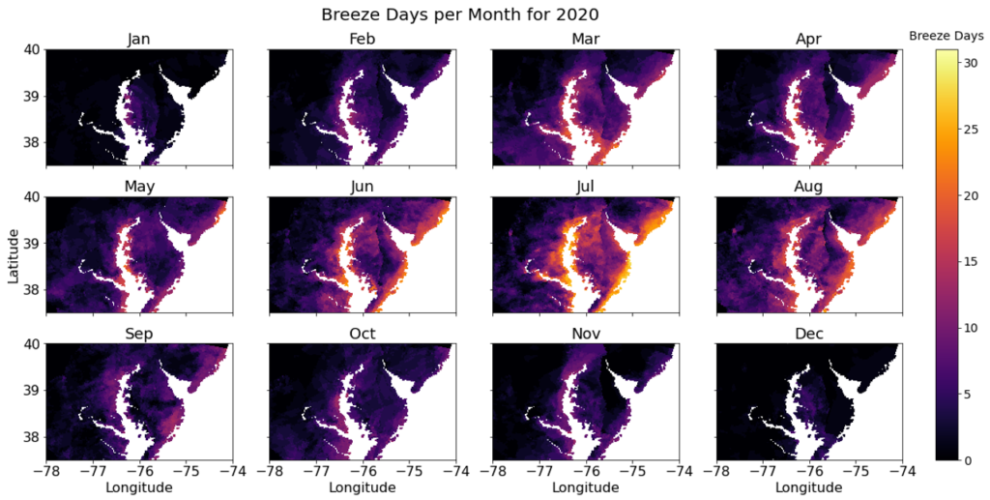Detecting the Chesapeake Bay Breeze from Model Output
Bay, lake, and sea breezes (or, water-body breezes) have often been detected through point-measurement techniques analyzing a time series. While useful for many applications, this approach is limited in that it is based on observation platforms that are sparsely populated and can only look backwards (we can only detect bay breezes that occurred previously, not those in the future). These techniques were found to perform poorly when applied to weather model data, thus, a new detection algorithm was developed. This model-based detection algorithm (MBDA) is shown to improve upon the results of observation-based detection algorithms applied to model data and shows promise of being generalizable across different weather models, and in detecting lake and sea breezes. With this detection algorithm, climatographies can be developed to cover regions where observations are lacking to give us a better understanding of how often water-body breezes occur.
